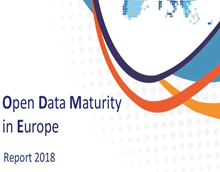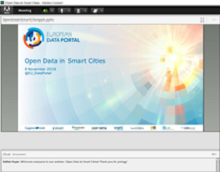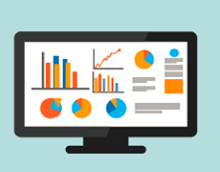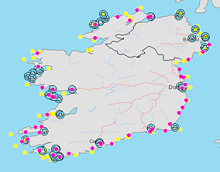Rasta 253 rezultatai (-ų)
Skip results of view Duomenų istorijos

- Data Story
Open Data Maturity report 2018 On 19 November 2018, the European Data Portal published their fourth annual report " Open Data Maturity in Europe 2018: New horizons for Open Data driven transformation". The report measures the state-of-play of open data in Europe and shares the progress European countries made with their open data activities against previous years. In addition, the 2018 report...

- Data Story
Insights into a high value data domain Health is defined by the World Health Organisation as a state of complete physical, mental and social well-being that goes beyond the absence of disease or infirmity. A person's health is dependent on variables such as their surrounding environment, sleeping pattern, diet, work-life balance and level of physical activity. By neglecting to take care of one's...

- Data Story
Open Data in Smart Cities On 8 November the European Data Portal (EDP) hosted the Webinar " Open Data in Smart Cities" to discuss initiatives across Europe. Open Data is crucial to realising Smart Cities. Open Data allows people to harness the data's full potential and create solution that address issues such as getting information on an event or finding a parking space. This is one of the reasons...

- Data Story
Insights into one of the high value data domains Not all Open Data has the same potential for reuse. The European Data Portal provides thirteen data categories of which certain data categories are more frequently reused than others. On a European level, the European Commission has identified five thematic data domains that are expected to represent those with the highest demand from reusers across...

- Data Story
The rise in the number of Chief Data Officers emphasises the growing importance of data. But what skills are really needed to work with Open Data? What so-called e-skills? Interviews were held with people with different backgrounds to discuss whether only technical skills are required to work with Open Data and explore what other skills matter. Are companies still chasing "Open Data unicorns"...

- Data Story
The long awaited open source code of the European Data Portal version 1 is now available on GitLab. The accompanying documentation provides a comprehensive overview of all the different components of the portal, guidelines and installation manuals. Important note: Only the source code for the updated or modified open source components is provided. There are no installers / installation programmes...

- Data Story
Throughout Europe, more and more Open Data is available for re-use. A number of studies have raised expectations with regards to the financial benefits of Open Data, however very little is known about how companies transform data into value. With a better understanding of the re-use of Open Data, both data providers and re-users could instigate a virtuous circle to leverage Open Data further. To...

- Data Story
In total there are currently 582,937 data sets on the European Data Portal. To find your way in this tremendous amount, there are 13 different data domains in which the data sets are divided. In order to make this mapping, the metadata - information about the data - contains information about data domains. Approximately 70% of the data sets are mapped to the data domains of the DCAT-Application...

- Data Story
In most European countries, the holiday season is about to start. For many people this is also the time of the year they will travel abroad and discover new places. When travelling abroad it might require you to speak another language than your mother tongue. Which country in Europe would be able to speak most foreign languages? The European Union publishes Open Data for each country on how many...

- Data Story
Open Data can be found in various fields or be illustrated in numerous ways. This allows people to get acquainted with sets which have never been explored or for people already familiar with a certain topic, to see if the set fits their needs. An example of "did-you-know-this-is-open-data", are the naval (or maritime) facilities at the coast of Ireland which is visualised in the figure below. The...
